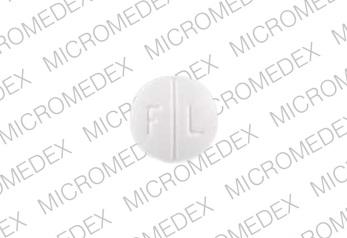Lexapro Dosage
Generic name: ESCITALOPRAM OXALATE 5mg
Dosage form: tablets and oral solution
Drug class: Selective serotonin reuptake inhibitors
Medically reviewed by Drugs.com. Last updated on Nov 17, 2023.
2.1 Major Depressive Disorder
Adults
The recommended dosage of Lexapro in adults is 10 mg once daily. A fixed-dose trial of Lexapro demonstrated the effectiveness of both 10 mg and 20 mg of Lexapro, but failed to demonstrate a greater benefit of 20 mg over 10 mg. Depending on clinical response and tolerability, dosage may be increased to the maximum recommended dosage of 20 mg once daily at an interval of no less than 1 week.
Pediatric Patients 12 years of age and older
The recommended dosage of Lexapro in pediatric patients 12 years of age and older is 10 mg once daily. Depending on clinical response and tolerability, dosage may be increased to the maximum recommended dosage of 20 mg once daily at an interval of no less than 3 weeks.
2.2 Generalized Anxiety Disorder
Adults
The recommended starting dosage of Lexapro in adults is 10 mg once daily. Depending on clinical response and tolerability, dosage may be increased to the maximum recommended dosage of 20 mg once daily at an interval of no less than 1 week.
Pediatric Patients 7 years of age and older
The recommended starting dosage of Lexapro for pediatric patients ages 7 years of age and older is 10 mg once daily. Depending on clinical response and tolerability, dosage may be increased to the maximum recommended dosage of 20 mg once daily at an interval of no less than 2 weeks.
2.3 Administration Information
Administer Lexapro orally once daily, in the morning or evening, with or without food.
2.4 Screen for Bipolar Disorder Prior to Starting Lexapro
Prior to initiating treatment with Lexapro or another antidepressant, screen patients for a personal family history of bipolar disorder, mania, or hypomania.
2.5 Recommended Dosage for Specific Populations
The recommended dosage for most elderly patients and patients with hepatic impairment is 10 mg once daily.
The recommended dosage for Lexapro in adults with a creatinine clearance less than 20 mL/minute has not been determined. No dosage adjustment is necessary for patients with mild or moderate renal impairment.
2.6 Discontinuation of Treatment with Lexapro
Symptoms associated with discontinuation of Lexapro and other SSRIs and SNRIs have been reported. Patients should be monitored for these symptoms when discontinuing treatment. A gradual reduction in the dose rather than abrupt cessation is recommended whenever possible. If intolerable symptoms occur following a decrease in the dose or upon discontinuation of treatment, then resuming the previously prescribed dose may be considered. Subsequently, the physician may continue decreasing the dose but at a more gradual rate.
2.7 Switching Patients to or from a Monoamine Oxidase Inhibitor (MAOI) Antidepressant
At least 14 days should elapse between discontinuation of an MAOI intended to treat psychiatric disorders and initiation of therapy with Lexapro. Conversely, at least 14 days should be allowed after stopping Lexapro before starting an MAOI intended to treat psychiatric disorders.
Frequently asked questions
- Why does Lexapro cause weight gain?
- SSRIs vs SNRIs - What's the difference between them?
- When is the best time to take Lexapro?
- How long does it take for Lexapro to work?
- Does Lexapro cause night sweats?
- What is the difference between Celexa and Lexapro?
- Lexapro vs Zoloft: How do they compare?
More about Lexapro (escitalopram)
- Check interactions
- Compare alternatives
- Pricing & coupons
- Reviews (2,376)
- Drug images
- Side effects
- Patient tips
- During pregnancy
- Generic availability
- Support group
- Drug class: selective serotonin reuptake inhibitors
- Breastfeeding
- En español
Patient resources
Professional resources
Related treatment guides
Further information
Always consult your healthcare provider to ensure the information displayed on this page applies to your personal circumstances.


